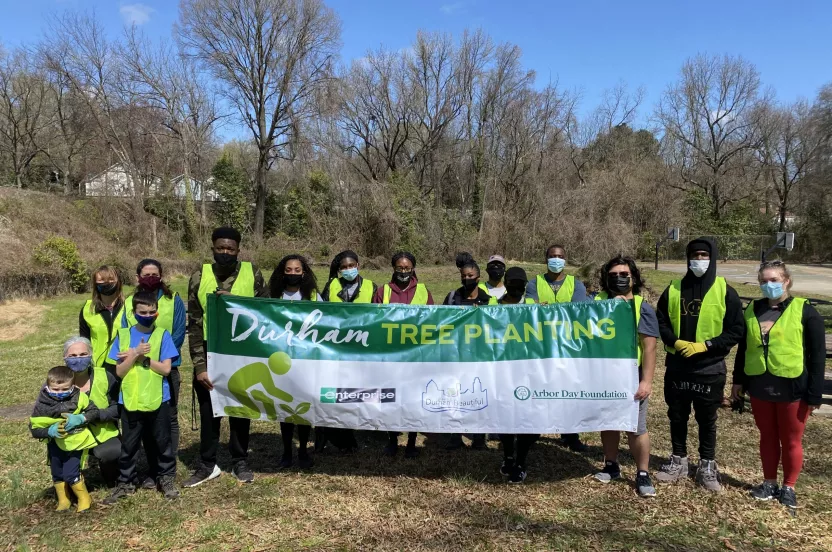Now live: The 2025 Canopy Report. Learn how Americans see trees. GET THE REPORT
Planting the Right Tree in the Right Place
Choose the right tree for the right place to grow beauty that lasts.
April 28, 2022
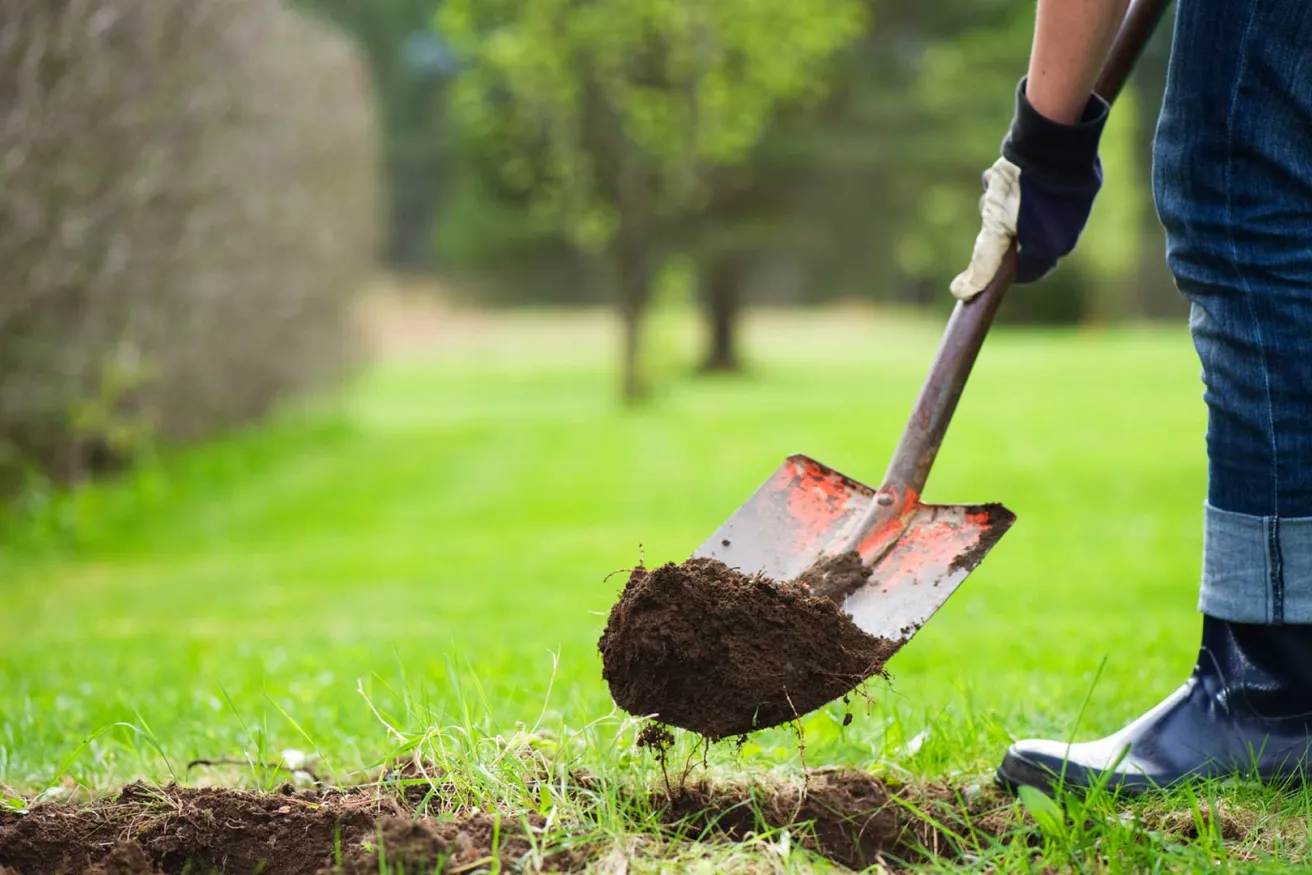
The why, the where, and the what of successful tree planting
Trees offer many benefits to homeowners and the communities in which they live, from shade and beauty to privacy, windbreak, and lower energy bills. But these benefits are only enjoyed when you plant the right tree in the right place. That’s because the space we have available for new trees often dictates how well that tree will grow and how it will be managed over time. Matching the attributes of a species to the limitations of your site will ultimately determine how well your new tree delivers the benefits you wanted from your tree at the beginning—your ‘why’ for planting in the first place.
So, why do you want to plant a tree?
Planting trees is a noble endeavor, no matter what the reason. One of the great features of trees is that they aren’t selfish with their outputs; they give away their benefits beyond their location! They produce oxygen we all get to breathe. They pull carbon dioxide from the atmosphere that may have been produced on the other side of the globe. They filter the water that ends up downstream, perhaps ending up coming out of someone else’s faucet. So, by all means, go forth and plant trees!
But when it comes to our home landscapes, or the community spaces we share with our neighbors, we probably have more specific reasons in mind. Often, adding beauty to our landscape is our primary motivation — the form of the tree. Other times, it’s the tree’s function that drives us: we want to create a screen from the neighbors, we want to create shade that lowers our energy bills, or we want to block winter winds. The great news is that with a little planning, we can maximize both form and function when picking a new tree and choosing a planting site.
Where will you plant?
Before you get visions of sugar (maples and wild) plums dancing in your head, let’s back up a bit. While the good news is that there are many tree species that can fulfill your desires, the place you are digging the hole will likely have some limitations. This is the moment where you start sketching out the constraints of your property, preferably using paper, pencil (with eraser), and a measuring tape.
Utilities
Homes and businesses are surrounded by utilities on all sides. There are likely power, phone, internet, and cable lines either overhead or underground. Certainly, we have water, sewer, gas, and irrigation lines underground. When urban foresters think of the “wrong tree in the wrong place,” the first image that often comes to mind is a shade tree planted directly beneath power distribution lines, a tree that has been pruned repeatedly by the power company so your lights stay on! Avoiding planting locations that will eventually conflict with utility lines is the number one way to ensure your tree can reach its full potential and live a long, productive life.
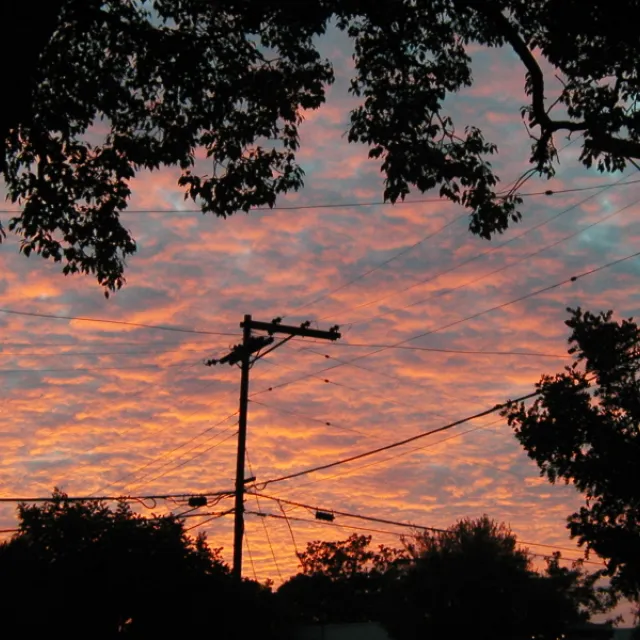
Overhead lines
There’s no doubt that electric service is critical to life in our modern world. And the number one reason power is disrupted in communities is due to trees and branches impacting overhead wires — mostly during storms but sometimes due to neglected maintenance or poor planting locations.
So here are some guidelines to minimize future conflicts between trees and overhead powerlines. A good rule-of-thumb is to plant your tree as many feet from the pole-to-pole center line as the anticipated mature height the tree will grow. For example, a trident maple (Acer buergerianum) that can grow 35 feet tall should be planted 35 feet from the pole-to-pole center line. There is some flexibility to this rule, except for the following: never plant any tree that reaches a mature height greater than 25 feet in the zone directly under lines or within 20 feet of the pole-to-pole center line.
Your utility company may have guidelines specific to your town or city, but they often assign planting recommendations in three zones adjacent to power line easements:
- Low zone: only small-statured trees (25 feet mature height) under or within 20 feet of the pole-to-pole center line.
- Medium zone: this is the corridor between 20 and 50 feet adjacent to the pole-to-pole center line. Here, you can plant both small- and medium-sized trees (any tree that will reach a mature height of 40 feet or less).
- Tall zone: 50 feet or more from the utility easement. Beyond 50 feet from overhead lines, you can plant any tree you want—but keep in mind the rule-of-thumb noted above.
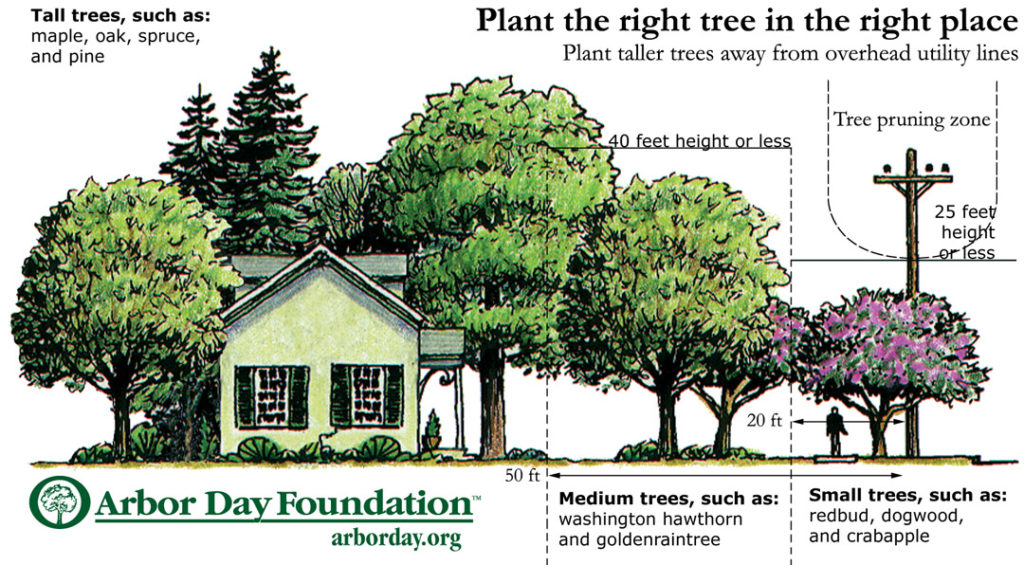
Underground Lines
The biggest risk to interfering with underground lines is when you dig the hole to plant your new tree. Never assume that your underground utilities are buried deep enough that you won’t hit them by digging. Always dial the national Call Before You Dig number—811—prior to planting. It usually takes one week or less for a locator service to mark the locations of all underground utilities. Remember that these services don’t know where your irrigation lines might be located. You’ll have to mark those yourself, and these are often the closest to the surface.
The rule of thumb for avoiding conflicts with underground utilities are as follows:
- Stay a minimum of 5 feet away from any buried utility line.
- Increase that distance to 10 feet or more over sewer lines.
Tree roots grow in all directions from the trunk, but the vast majority can be found in the top 24 inches of soil. Roots are also opportunistic, meaning that they will grow in any direction where there is both water and oxygen. That means that broken water or sewer lines are prime spots for root penetration. (Tree roots don’t break pipes, but they do find the cracks!) Maintaining your home’s infrastructure can save you both money and headaches when it comes to tree roots.
Structures
We often place trees in our landscape to accent our home. Even though the tree is small when we plant it, we know it will grow and fill a space — growth that can achieve our plans or not, depending on where we place it relative to our home, other buildings on the property, or other permanent infrastructure like walkways and driveways.
Just like with utilities, there are some distance guidelines for planting trees near structures that can reduce root and branch conflicts:
- Plant small trees (25 feet tall or less, at maturity) at least 8 to 10 feet from a wall, or 6 to 8 feet from a corner of your home.
- Plant medium trees (up to 40 feet at maturity) at least 15 feet from walls, and at least 12 feet from a corner.
- Plant large trees (greater than 40 feet tall, at maturity) at least 20 feet from a wall, and at least 15 feet from any corner.
- These distances are also good guidelines for planting near walkways and driveways.
Now that you have identified all the physical constraints of your desired planting location, pick up your pencil and draw each one you encountered on your property, mapping the buildings, walkways, utilities, and the minimum distances from each. This will help you identify locations where you can plant a tree.
Soil Quality
Trees aren’t like people; they can’t get up and move once they’ve been planted. Trees are simply stuck with the soil in which you place them. You’ve probably read plant labels that describe the soil conditions for a species, usually something along the lines of: prefers a deep, well-drained loamy soil, with a pH between 6.0 and 7.0. I call this the “Goldilocks soil profile.” What tree wouldn’t like these perfect growing conditions? If you own such a site, congratulations on your geographic good fortune! But the truth is, those sites are rare; most of our urban and suburban homesites are built on highly disturbed and compacted soils, dosed with salt in the winter and perhaps lawn chemicals in the summer, subject to both overwatering and underwatering (depending on irrigation systems), possessing low organic matter and often a high pH — the list can go on! And no matter what you read on the internet or hear at the local garden center, it’s very hard to adjust soil conditions to match ideal conditions. So, what’s a tree planter to do? What you’re really seeking is a tree that can tolerate the conditions you have in your yard, and the first step toward identifying such a species involves doing a little digging (literally) to discover the key properties of your soil. You can always take soil samples and send them to your county extension office to have an analysis completed, but here are some of the key soil properties and how to understand — and even correct — the problems you find.
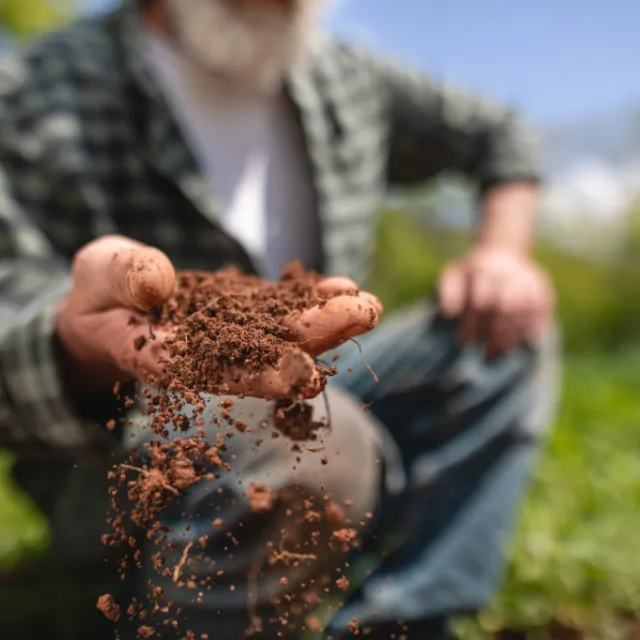
Soil Texture and Structure
You may know these soil particles — clay, silt, and sand — and how they combine to form soils of different textures. There’s almost nothing you can do to change this basic soil type; once a silty clay loam, always a silty clay loam. Structure, though, is how these soil combinations combine with air pockets to form the soil we dig with our shovel. It’s essentially how tight those tiny soil structures are packed together, and many of our urban soils are simply packed too tightly — they’re compacted. The act of digging, under the right moisture conditions, will help rearrange that structure, breaking up compacted soil and increasing the water-and-oxygen-holding capacity of the soil. Sometimes there is no substitute for physically breaking up soil to unlock its potential.
pH
Here’s another soil property that’s extremely difficult to change. pH is a measure of acidity (or alkalinity), on a logarithmic scale (a soil with a pH of 5.0 is ten times more acidic than a pH of 6.0). Most trees grow well in soils with a pH between 5.6 and 7.4 (7.0 is neutral). Higher pH values can make it hard for some plants to take in key macronutrients, like iron. Very low values can make toxic metals available to plants. You can discover your soil pH with a simple soil test kit or by sending samples to a local lab for analysis.
Drainage
Trees need water to survive and thrive, but they also want water to drain away from their root zone. We all know drought is hard on trees, but more urban trees suffer from too much water than too little — at least once they are established. That excess water fills up all the air spaces in the soil and the trees can’t breathe (that’s right, trees breathe through their roots, mostly). Growth slows, less food is produced during photosynthesis, and trees are more subject to insect and disease attacks.
One easy way to find out about the drainage of your soil is a percolation test, and here’s one way to do it:
- Dig a hole 12 inches deep, by 12 inches in diameter, with straight sides.
- Fill the hole with water. The next day, fill the hole with water again.
- Lay a stick across the opening of the hole and measure the depth of the water with a ruler.
- Measure the water level every hour until the water has drained completely.
- Results: good drainage equates to 2 inches per hour (range is 1 to 3 inches per hour); poor drainage equals 1 inch per hour or less, and excessive drainage is 4 inches per hour or more.
Organic Matter
This is a “good news/bad news” story. The bad news is that many of our urban soils are deficient in organic matter — those decaying bits of plants and animals that fall on, or live in, the soil. The ideal amount of organic matter is about 5%, by soil volume. That doesn’t sound like much, but between management practices like raking and disposing of leaves in autumn and the needs of our grass and plants during the growing season, there is often just 3% or less organic matter in a typical urban yard soil.
Here’s the good news: all of the soil problems I mentioned above — poor drainage, excessive drainage, high pH, low pH, soil compaction — can be improved by applying organic matter to the soil. That’s because it’s usually the combinations of negative soil factors that get our trees in trouble: compaction impacts drainage, soil texture and overwatering lead to compaction, and low oxygen levels in high-pH soils keep trees from getting the nutrients they need. When we consistently apply organic matter — crushed leaves, wood chip mulch, pine straw, etc.—under the dripline of our landscape trees and shrubs, we begin to recreate the biome of soil bacteria and animals that trees evolved with. This is their true environment! Remember that “Goldilocks soil profile” I mentioned earlier? Well, we can get a lot closer to that ideal soil when we consistently apply layers of organic matter to the root zones of our landscape trees.
Climate
One more factor that will affect which tree species you choose for your landscape is your hardiness zone. This climate zone is an indication of your average annual minimum temperature, since cold temperatures in winter are a limiting factor for tree survival. Knowing your zone will help you select a tree that can survive winter where you live.
If you are concerned about our changing climate, considering adding species from a more southerly hardiness zone, do so with this caveat: while the average maximum and minimum temperatures may be shifting, climate variability is also increasing. Many parts of the country will see more record temperatures — both highs and lows — which can be lethal to plants not adapted to these extremes.
Also Watch: Ask an Arborist: How do I Choose a Nursery Tree?
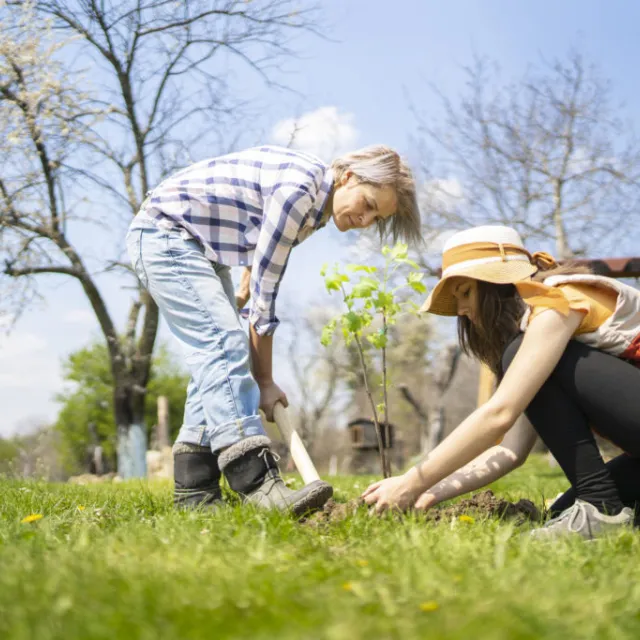
What will you plant?
At this point, you know why you are planting and you’ve thought through the constraints of where to plant. So you are ready to sort through your tree species options! It’s always exciting to consider one or more of the latest plant introductions being sold at your local nursery, but let’s consider a few guiding principles. Then we’ll highlight the attributes of different trees and varieties that match your why and your where.
Diversity
It’s important to consider overall species diversity when choosing a tree to plant — especially when you have a new home with a “blank slate” landscape. Diversity of species (actually, genus is more important than species) can make urban and suburban landscapes more resilient in the aftermath of any new pathogen or insect that comes our way. Diversity of size, seasonal color, and shape also add visual interest to home landscapes.
A common nursery industry practice is the development of cultivars: a version of a species with special attributes that is propagated vegetatively (cloned) so that every individual sold is exactly like its parent. These plants will have names such as ‘October Glory’ Red Maple (Acer rubrum ‘October Glory’). A word of caution about adding new cultivars to an existing landscape: you may be adding risk as well as beauty. Planting multiple specimens of a single cultivar — or adding different cultivars of the same species — may not insulate your trees against a new devastating insect or disease. Increasing diversity is best accomplished by adding a new tree from a completely different genus than the existing trees on your site or in your city. And that may even mean adding a non-native tree.
Native vs. Non-native
There’s no simple answer to whether it’s better to add a native or non-native tree to your home landscape. It’s all about context. There is no abstract “native plant,” since all plants are native to somewhere on this planet. There are, however, plants that are native to a particular place on this planet — a region, a state, a zip code, a hilltop. When you use the word “native” in the context of plant selection, ask yourself, “native to where?”
That said, so-called “native trees” have successfully survived where you live and are proven examples of what to plant, having evolved with the other plants and animals of the region. They are well-adapted to your environment. But our home sites are rarely native habitats anymore; they are greatly altered. It’s also true that many non-native species seem even more adapted to their new environment than native ones. In fact, that’s what makes invasive plants so damaging. They out-compete native plants for growing space in local habitats. We definitely do not want to add more invasive plants to North America!
How, then, to make a choice? According to recent studies, a good rule-of-thumb is to have at least 70% of the trees, shrubs, and other perennial plants in your home landscape native to your region. As for non-natives, there are many well-behaved tree species (that don’t escape into surrounding habitats) that have been introduced to the U.S., and they may have features you want in your landscape. Just add them sparingly and agree to consider a native alternative.
Form
Form is the combination of innate characteristics of a particular species, and the combination of these features should match your why and your where for planting:
- Size: Consider the typical growth expectation (height and spread) for a mature specimen. This should match your site constraints.
- Shape: Each species has a natural shape as it grows, so matching a species to your expectations will minimize disappointment — and difficult management choices in the future.
- Deciduous vs. evergreen: This choice impacts both form and function, since evergreen trees provide year-round foliage for screening unsightly views or for adding wind protection, and deciduous trees provide that brilliant fall color we enjoy across the temperate climates of the continent.
- Flowers & fruits: We know spring has sprung each year when our yards and cities are filled with the sights and smells of flowering trees. In most cases, those flowers foretell abundant berries, seeds, nuts or pods, so consider tree placement where these fruits won’t be a nuisance or a hazard to passers-by.
Visit our online Tree Wizard for help finding trees that meet your needs and your site characteristics, on the way to planting your perfect tree!
Need additional guidance?
- Your state urban forester’s office will often have tree selection guides available.
- Your state cooperative extension office is a great local resource that can advise you on what trees to plant on your property.
- Local utilities often have publications that highlight trees that are recommended for planting near powerlines.
- Visit About Trees for additional resources when planting.



